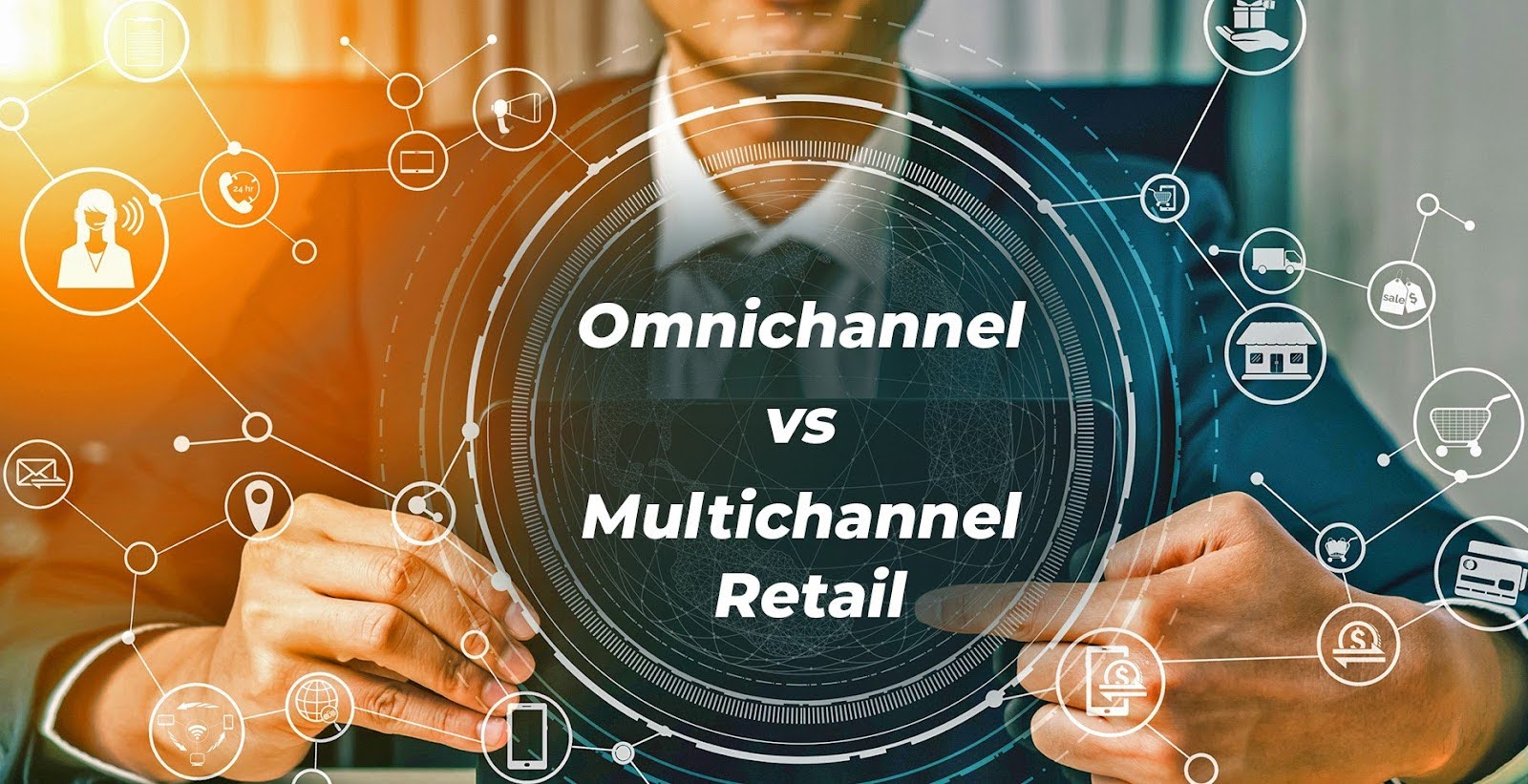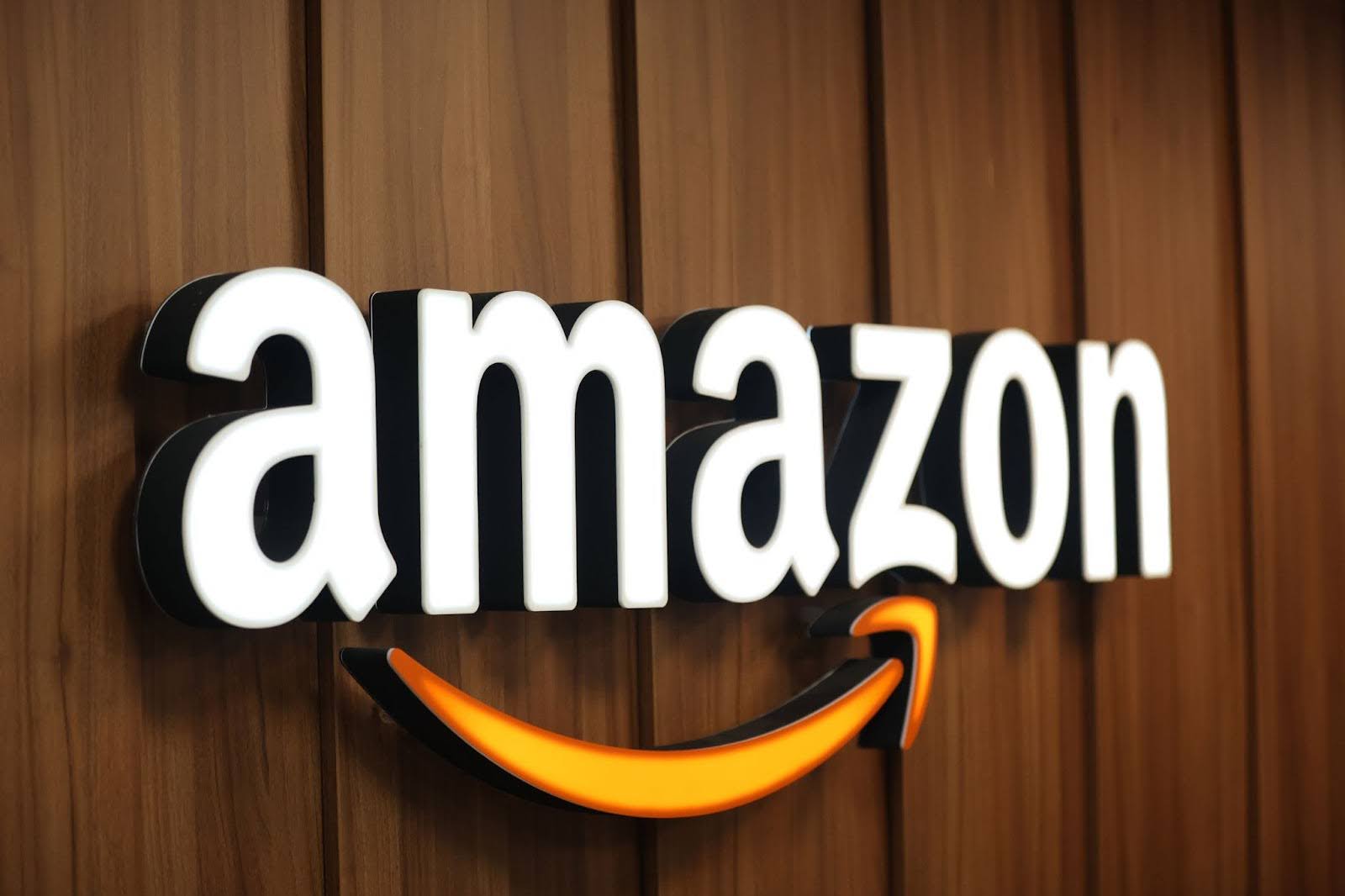In today’s fast-paced and highly competitive retail landscape, mastering the art of omnichannel retailing strategy has become imperative for businesses striving to stay ahead of the curve. Gone are the days of single-channel retailing; consumers now expect seamless experiences across multiple touchpoints, whether online or offline. As such, understanding and implementing an effective omnichannel retailing strategy has emerged as the cornerstone of success for retailers worldwide.
In this comprehensive guide, we delve into the intricacies of omnichannel retailing strategy, exploring its significance and providing actionable insights for businesses looking to thrive in the digital age. From defining the concept of omnichannel retailing to dissecting its key components, this blog post aims to equip you with the knowledge and tools necessary to navigate the complexities of modern retail.
Table of Contents
- Understanding Omnichannel Retailing Strategy
- What Makes an Effective Omnichannel Retailing Strategy?
- Case Study: Examples of Successful Omnichannel Retail Strategy
- Overcoming Challenges in Implementing Omnichannel Strategy
- Future Trends in Omnichannel Retailing
- Tips for Implementing Omnichannel Retailing Strategy
- Conclusion
Understanding Omnichannel Retailing Strategy
In today’s ever-evolving retail landscape, the concept of omnichannel retailing strategy has emerged as a pivotal element in the success of businesses aiming to thrive amidst fierce competition. To embark on this journey, it’s imperative to grasp the fundamental concepts underlying omnichannel retailing strategy, its evolution, key characteristics, and the myriad benefits it offers to businesses.
Definition of Omnichannel Retailing
At its core, an omnichannel retailing strategy represents a seamless integration of various channels, both online and offline, to create a unified and cohesive shopping experience for consumers. Unlike traditional multichannel approaches, where each channel operates independently, omnichannel retailing strategy ensures a synchronized and interconnected ecosystem where customers can seamlessly transition between channels without any disruption in their journey.
In a traditional multichannel setup, customers often encounter disjointed experiences as they navigate across different channels. For instance, a customer might browse products online, only to find discrepancies in pricing or availability when visiting a physical store. Such inconsistencies can lead to frustration and dissatisfaction, ultimately hampering the overall shopping experience.
In contrast, omnichannel retailing strategy transcends these limitations by fostering a synchronized and interconnected ecosystem. Whether customers choose to shop online, visit a store, engage via social media, or interact with a mobile app, the experience remains seamless and consistent throughout their journey. Product information, pricing, promotions, and inventory status are synchronized across all channels, ensuring that customers receive accurate and up-to-date information regardless of their chosen touchpoint.

Moreover, omnichannel retailing strategy enables customers to transition effortlessly between channels without any disruption. For example, a customer may start browsing products on a retailer’s website, add items to their cart, and later choose to complete the purchase in-store. Alternatively, they might research products in-store before making a final purchase decision via the retailer’s mobile app. In both scenarios, the transition between online and offline channels is seamless, enhancing convenience and flexibility for the customer.
By creating this interconnected ecosystem, an omnichannel retailing strategy not only enriches the customer experience but also strengthens the relationship between the customer and the brand. Customers feel valued and appreciated when their interactions with the brand are smooth, consistent, and tailored to their preferences. As a result, they are more likely to develop loyalty towards the brand and become repeat purchasers, driving long-term value for the business.
In essence, the omnichannel retailing strategy represents a paradigm shift in how retailers approach customer engagement. By embracing seamless integration across multiple channels, retailers can create a unified and cohesive shopping experience that resonates with modern consumers. In doing so, they position themselves at the forefront of innovation, differentiation, and success in today’s competitive retail landscape.
Evolution from Multichannel to Omnichannel
The transition from multichannel to omnichannel signifies a paradigm shift in how retailers perceive and engage with their customers. While multichannel approaches focus on establishing a presence across multiple channels, often leading to fragmented experiences, omnichannel retailing strategy emphasizes the convergence of these channels into a harmonious whole. This evolution reflects the changing expectations and preferences of modern consumers, who demand a consistent and personalized experience across all touchpoints.
In essence, multichannel approaches view each channel as an independent entity, operating in silos with minimal interaction or coordination. For instance, a retailer may have separate online and offline sales channels, each with its own set of inventory, pricing, and promotional strategies. While this approach allows retailers to reach customers through multiple touchpoints, it often leads to inconsistencies and inefficiencies, ultimately compromising the overall customer experience.
In contrast, the omnichannel retailing strategy transcends these limitations by recognizing the interconnectedness of various channels and their collective impact on the customer journey. Rather than treating each channel in isolation, omnichannel retailers seek to seamlessly integrate these channels, ensuring a consistent and cohesive experience for customers across all touchpoints.

This evolution is driven by the changing expectations and preferences of modern consumers, who demand a more personalized and cohesive shopping experience. Today’s consumers are no longer satisfied with fragmented interactions; they expect brands to understand their preferences, anticipate their needs, and deliver tailored experiences that resonate with their individual preferences and behaviors.
By embracing the omnichannel retailing strategy, retailers can meet these evolving expectations and forge deeper connections with their customers. Whether customers choose to shop online, visit a physical store, interact via social media, or engage with a mobile app, the experience remains consistent, personalized, and seamless. Product information, pricing, promotions, and inventory status are synchronized across all channels, ensuring that customers receive a unified experience regardless of their chosen touchpoint.
Moreover, the omnichannel retailing strategy enables retailers to leverage data and analytics to gain deeper insights into customer behavior, preferences, and purchasing patterns. Armed with this knowledge, retailers can deliver targeted and personalized experiences that resonate with individual customers, driving engagement, loyalty, and ultimately, business growth.
All in all, the transition from multichannel to omnichannel represents a fundamental shift in how retailers approach customer engagement. By converging and integrating various channels into a harmonious whole, retailers can deliver a consistent, cohesive, and personalized experience that meets the evolving expectations of modern consumers. In doing so, they position themselves for success in an increasingly competitive and dynamic retail landscape.
Key Characteristics of Omnichannel Retailing
So how do you turn your business into an omnichannel retailer? Well, there are several key characteristics that distinguish omnichannel retailing strategy from its predecessors.
- Integration: Omnichannel retailing strategy emphasizes the seamless integration of various channels, both online and offline, to create a unified and cohesive shopping experience for consumers. Unlike traditional multichannel approaches, where each channel operates independently, omnichannel retailing strategy orchestrates a harmonious interplay between channels, ensuring consistency and continuity throughout the customer journey.
- Consistency: Consistency lies at the heart of omnichannel retailing strategy, encompassing uniformity in branding, messaging, pricing, and customer experience across all channels. Regardless of the channel through which customers choose to interact with the brand, they can expect a consistent and cohesive experience that reflects the brand’s identity and values. This consistency fosters trust, reliability, and loyalty among customers, strengthening their connection with the brand over time.
- Personalization: Personalization is a hallmark of omnichannel retailing strategy, enabling retailers to tailor their offerings and interactions based on individual customer preferences, behavior, and demographics. By harnessing data and analytics, retailers can deliver personalized recommendations, promotions, and content that resonate with each customer’s unique needs and interests. This personalized approach not only enhances the overall shopping experience but also drives engagement, loyalty, and repeat purchases.
- Seamless Customer Experience: Omnichannel retailing strategy prioritizes the creation of a seamless and frictionless customer experience across all touchpoints. Whether customers choose to shop online, visit a physical store, interact via social media, or engage with a mobile app, the experience remains consistent, intuitive, and user-friendly. This seamless integration enables customers to transition effortlessly between channels without any disruption, enhancing convenience and satisfaction.
- Data-Driven Insights: Omnichannel retailing strategy relies on data and analytics to gain deeper insights into customer behavior, preferences, and purchasing patterns. By capturing and analyzing data from various channels, retailers can identify trends, anticipate customer needs, and optimize their strategies accordingly. These data-driven insights empower retailers to make informed decisions, enhance customer engagement, and drive business growth.
- Flexibility and Adaptability: Omnichannel retailing strategy recognizes the dynamic nature of consumer preferences and market trends, emphasizing flexibility and adaptability in response to changing conditions. Retailers must continuously evolve their omnichannel strategies to meet the evolving needs and expectations of customers, leveraging emerging technologies, trends, and opportunities to stay ahead of the competition.
In essence, these key characteristics distinguish omnichannel retailing strategy as a holistic, customer-centric approach that transcends the limitations of traditional multichannel approaches. By prioritizing integration, consistency, personalization, and data-driven insights, omnichannel retailers can create immersive, engaging, and rewarding experiences that drive customer loyalty and business success in today’s competitive retail landscape.
Benefits of Implementing Omnichannel Retailing for Businesses
The adoption of omnichannel retailing strategy offers a plethora of benefits for businesses, including but not limited to:
- Enhanced Customer Experience: By providing a seamless and cohesive shopping experience across all channels, omnichannel retailing strategy enhances customer satisfaction and loyalty. Customers can effortlessly transition between online and offline channels, enjoying the convenience of multiple touchpoints.
- Increased Sales and Revenue: Omnichannel retailing strategy unlocks new avenues for revenue generation by tapping into the full potential of each channel. By leveraging data-driven insights and personalized recommendations, retailers can drive cross-selling and upselling opportunities, thereby boosting sales and revenue.
- Improved Inventory Management: Omnichannel retailing strategy facilitates real-time inventory visibility across all channels, enabling retailers to optimize stock levels, prevent stockouts, and fulfill orders efficiently. This streamlined inventory management not only minimizes operational costs but also enhances the overall shopping experience for customers.
- Deeper Customer Insights: By harnessing data analytics and customer insights, omnichannel retailing strategy enables retailers to gain a deeper understanding of customer behavior, preferences, and purchasing patterns. This valuable intelligence empowers retailers to refine their marketing strategies, product assortments, and promotional campaigns to better resonate with their target audience.
- Competitive Advantage: In a competitive marketplace, the omnichannel retailing strategy serves as a potent differentiator, enabling businesses to stand out from the crowd and capture market share. By delivering a superior and differentiated shopping experience, retailers can strengthen their brand positioning and gain a competitive edge over rivals.
In general, the omnichannel retailing strategy represents a paradigm shift in how retailers engage with customers, transcending the limitations of traditional multichannel approaches. By embracing this holistic and customer-centric approach, businesses can unlock new opportunities for growth, innovation, and success in the dynamic world of retail.
What Makes an Effective Omnichannel Retailing Strategy?
In the rapidly evolving landscape of retail, the term omnichannel retailing strategy has become more than just a buzzword—it’s a fundamental approach that distinguishes successful retailers from their competitors. At the heart of this strategy lies the seamless integration of online and offline channels to create a unified and cohesive shopping experience for consumers.
Seamless Customer Experience
In this part, we’ll delve into what makes an effective omnichannel retailing strategy, focusing especially on seamless customer experience; which include integration of online and offline channels, consistency across channels, and personalization. A seamless customer experience is the cornerstone of an effective omnichannel retailing strategy. By integrating online and offline channels, maintaining consistency across touchpoints, and leveraging personalization, retailers can create immersive and engaging experiences that resonate with modern consumers.
Integration of Online and Offline Channels
One of the hallmarks of an effective omnichannel retailing strategy is the seamless integration of online and offline channels. Gone are the days when customers viewed online and offline shopping as distinct experiences. Today’s consumers expect retailers to offer a seamless journey that allows them to research products online, visit physical stores to see and touch the items and complete the purchase through their preferred channel.

For example, a customer might browse products on a retailer’s website, add items to their cart, and then visit a physical store to try them on or seek assistance from a sales associate. With an effective omnichannel strategy in place, the customer’s shopping cart and preferences seamlessly carry over from the online platform to the offline store, ensuring a consistent experience across channels.
Consistency Across Channels
Consistency is another crucial aspect of a seamless customer experience in omnichannel retailing. Regardless of the channel through which customers choose to interact with the brand, they should encounter consistent branding, messaging, pricing, and customer service. This consistency fosters trust and reliability, reinforcing the brand’s identity and values across all touchpoints.

Imagine a scenario where a customer sees a promotion for a product on social media but discovers a different price when they visit the brand’s website. Such inconsistencies can erode trust and lead to frustration, ultimately driving customers away. By maintaining consistency across channels, retailers can ensure a cohesive and memorable experience that resonates with customers and encourages loyalty.
Personalization
Personalization is the icing on the cake when it comes to delivering a seamless customer experience in omnichannel retailing. In today’s data-driven world, customers expect retailers to understand their preferences, anticipate their needs, and tailor their interactions accordingly. From personalized product recommendations to targeted promotions, personalization adds a layer of customization that enhances the overall shopping experience.

For instance, a customer who frequently purchases running shoes may appreciate receiving recommendations for related products such as athletic apparel or fitness accessories. By leveraging data analytics and customer insights, retailers can deliver personalized experiences that make customers feel valued and understood, ultimately driving engagement and loyalty.
Technology Infrastructure
In today’s hyperconnected world, where consumers seamlessly navigate between online and offline channels, mastering the art of omnichannel retailing strategy has become essential for businesses aiming to stay competitive and relevant. At the core of an effective omnichannel retailing strategy lies a robust technology infrastructure that enables seamless integration, efficient operations, and personalized experiences across all touchpoints. In this part, we’ll explore the key components of technology infrastructure that underpin a successful omnichannel retailing strategy: data analytics and customer insights, inventory management systems, and order fulfillment and logistics.

A robust technology infrastructure serves as the backbone of any effective omnichannel retailing strategy, enabling retailers to harness the power of data analytics, optimize inventory management, and streamline order fulfillment and logistics. By investing in advanced technologies and systems that support seamless integration, efficiency, and personalization, retailers can deliver exceptional experiences that drive customer loyalty and business growth in today’s competitive retail landscape. Let’s delve into the key components of technology infrastructure that drive success in omnichannel retailing:
Data Analytics and Customer Insights
Data analytics and customer insights play a pivotal role in informing strategic decisions and driving personalized experiences in omnichannel retailing. By harnessing data from various sources, including online transactions, in-store interactions, social media engagement, and customer feedback, retailers can gain valuable insights into consumer behavior, preferences, and purchasing patterns.

Advanced analytics tools and techniques enable retailers to analyze large volumes of data in real-time, uncovering actionable insights that inform marketing strategies, product assortments, pricing decisions, and promotional campaigns. For example, retailers can leverage predictive analytics to anticipate future trends and consumer demands, enabling proactive decision-making and strategic planning.
Furthermore, customer insights derived from data analytics empower retailers to deliver personalized experiences that resonate with individual customers. By segmenting customers based on demographics, purchase history, browsing behavior, and other relevant factors, retailers can tailor product recommendations, promotions, and communication channels to meet the unique needs and preferences of each customer segment.
Inventory Management Systems
Effective inventory management is critical to the success of an omnichannel retailing strategy, ensuring that products are available when and where customers want them. Inventory management systems provide retailers with real-time visibility into stock levels, allowing them to optimize inventory across multiple channels and fulfillment centers.

By centralizing inventory data and synchronizing it across all channels, retailers can prevent stockouts, minimize overstocking, and improve overall inventory accuracy. This ensures that customers have access to the products they desire, whether they choose to shop online, visit a physical store, or utilize other sales channels.
Moreover, inventory management systems enable retailers to implement advanced fulfillment options such as buy online, pick up in-store (BOPIS), ship-from-store, and same-day delivery. These omnichannel fulfillment capabilities not only enhance convenience for customers but also drive operational efficiency and cost savings for retailers.
Order Fulfillment and Logistics
Efficient order fulfillment and logistics are essential components of an effective omnichannel retailing strategy, ensuring that orders are processed, shipped, and delivered to customers in a timely manner. Seamless coordination between online and offline channels is crucial to delivering a seamless and frictionless shopping experience.

Advanced fulfillment technologies, such as distributed order management systems and warehouse management systems, enable retailers to optimize order routing, allocate inventory efficiently, and minimize shipping times and costs. This allows retailers to fulfill orders from the most optimal location, whether it’s a fulfillment center, warehouse, or store, based on factors such as inventory availability, proximity to the customer, and shipping preferences.
Additionally, partnerships with third-party logistics providers and last-mile delivery services enable retailers to expand their delivery capabilities and reach customers in diverse geographic locations. By leveraging technology and logistics expertise, retailers can offer flexible delivery options such as same-day delivery, next-day delivery, and curbside pickup, enhancing convenience and satisfaction for customers.
Marketing and Communication
In the dynamic and ever-evolving world of retail, mastering the art of omnichannel retailing strategy has become imperative for businesses seeking to thrive amidst fierce competition and changing consumer preferences. At its core, an effective omnichannel retailing strategy goes beyond mere presence across multiple channels; it revolves around delivering seamless, cohesive, and personalized experiences to customers across all touchpoints. In this comprehensive guide, we’ll explore one of the key pillars of an effective omnichannel retailing strategy: marketing and communication. From unified branding and messaging to targeted marketing campaigns and the utilization of social media and mobile platforms, we’ll delve into how retailers can leverage omnichannel marketing and communication strategies to create a compelling omnichannel experience for their customers.

Marketing and communication serve as powerful tools for retailers to engage with customers, build brand awareness, drive sales, and foster loyalty. In the context of omnichannel retailing strategy, effective marketing and communication strategies play a crucial role in shaping the overall customer experience and driving success across various channels. Let’s explore the key components of marketing and communication in an omnichannel retailing strategy
Unified Branding and Messaging
Consistency is key when it comes to branding and messaging in an omnichannel retailing strategy. A unified brand identity and messaging ensure that customers have a seamless and cohesive experience across all touchpoints, whether they’re browsing products online, visiting a physical store, or interacting with the brand on social media.

A unified branding strategy encompasses elements such as logos, color schemes, typography, and brand voice, ensuring consistency across all marketing channels and communication materials. Whether it’s a print advertisement, a social media post, or an email newsletter, customers should instantly recognize and resonate with the brand’s identity and values.
Furthermore, unified messaging ensures that the brand’s story, value proposition, and key messaging points are consistent across all channels. This consistency builds trust and credibility with customers, reinforcing the brand’s positioning and strengthening its connection with the target audience.
Targeted Marketing Campaigns
In the era of big data and analytics, retailers have unprecedented access to customer insights and behavioral data, enabling them to tailor their marketing campaigns to specific audience segments and individual preferences. Targeted marketing campaigns allow retailers to deliver relevant and personalized messages to customers, increasing engagement and driving conversions.
By leveraging data analytics, retailers can segment their customer base based on demographics, purchase history, browsing behavior, and other relevant factors. This segmentation enables retailers to create targeted marketing campaigns that resonate with each customer segment, addressing their unique needs, interests, and pain points.

For example, a retailer may segment its customers into different groups based on their preferences for certain product categories, then create targeted email campaigns featuring personalized product recommendations and exclusive promotions tailored to each segment. This approach not only increases the effectiveness of marketing campaigns but also enhances the overall customer experience by delivering content that is relevant and valuable to each individual customer.
Utilization of Social Media and Mobile Platforms
Social media and mobile platforms play a central role in an omnichannel retailing strategy, serving as key touchpoints for customer engagement, brand building, and sales. With the proliferation of smartphones and social media networks, consumers are increasingly turning to these channels to discover products, seek recommendations, and interact with brands.

Retailers can leverage social media platforms such as Facebook, Instagram, Twitter, and Pinterest to engage with customers, showcase products, and drive traffic to their online and offline stores. By creating compelling content, running targeted advertising campaigns, and fostering community engagement, retailers can build brand awareness, generate leads, and drive sales through social media channels.
Additionally, mobile platforms such as mobile apps and mobile-optimized websites play a crucial role in an omnichannel retailing strategy, providing customers with a seamless and convenient shopping experience on the go. Mobile apps enable retailers to deliver personalized experiences, facilitate frictionless transactions, and drive customer loyalty through features such as loyalty programs, personalized recommendations, and in-app promotions.
Moreover, retailers can leverage technologies such as geolocation targeting and push notifications to deliver relevant and timely messages to customers based on their location and behavior. For example, a retailer may send a push notification to a customer who has previously visited their physical store, informing them of a special promotion or event happening nearby.
Customer Service and Support
In the ever-evolving landscape of retail, customer service and support play a pivotal role in shaping the overall shopping experience and driving customer satisfaction and loyalty. An effective omnichannel retailing strategy goes beyond offering products and services; it encompasses providing exceptional customer service and support across all touchpoints, both online and offline.
Customer service and support are critical elements of an effective omnichannel retailing strategy, as they directly impact the overall customer experience and influence purchasing decisions, brand perception, and customer loyalty. In this part, we’ll explore the key components of customer service and support in an omnichannel retailing strategy: 24/7 availability, multiple communication channels, and post-purchase engagement and support.
24/7 Availability
In today’s digital age, consumers expect round-the-clock access to customer service and support, regardless of the time or day. An effective omnichannel retailing strategy ensures 24/7 availability of customer service across all channels, including phone support, live chat, email, social media, and self-service options such as FAQs and knowledge bases.
Round-the-clock availability of customer service enables retailers to address customer inquiries, resolve issues, and provide assistance in real-time, regardless of the customer’s location or time zone. This not only enhances customer satisfaction but also demonstrates the retailer’s commitment to delivering exceptional service and support.

For example, a customer who encounters an issue with their online order late at night expects to receive prompt assistance and resolution, even outside of regular business hours. By offering 24/7 availability of customer service, retailers can meet these expectations and ensure a positive and seamless experience for customers across all channels.
Multiple Communication Channels
An effective omnichannel retailing strategy leverages multiple communication channels to engage with customers and provide support throughout their shopping journey. From traditional channels such as phone and email to newer channels such as live chat, social media, and messaging apps, retailers must offer a diverse range of communication options to cater to different customer preferences and needs.
By providing customers with multiple communication channels, retailers empower them to choose the most convenient and accessible method of contacting customer service. Some customers may prefer the immediacy of live chat or messaging apps, while others may prefer the personal touch of speaking with a customer service representative over the phone.

Moreover, integrating these communication channels into a unified platform enables retailers to deliver a seamless and consistent experience across all touchpoints. For example, a customer who initiates a conversation via live chat on the retailer’s website should be able to seamlessly transition to phone support or social media messaging without losing context or having to repeat information.
Post-Purchase Engagement and Support
An effective omnichannel retailing strategy extends beyond the point of purchase to encompass post-purchase engagement and support. After customers complete a transaction, retailers have an opportunity to engage with them, gather feedback, and provide ongoing support to ensure a positive and fulfilling experience.
Post-purchase engagement can take various forms, including order confirmation emails, shipment notifications, delivery tracking, and follow-up communications to gather feedback or offer assistance. By proactively reaching out to customers after their purchase, retailers demonstrate care and concern for their satisfaction and build rapport and loyalty over time.
Moreover, post-purchase support plays a crucial role in fostering customer retention and repeat business. Whether it’s addressing post-purchase inquiries, resolving issues, or providing assistance with returns or exchanges, retailers must ensure that customers receive prompt and effective support throughout their post-purchase journey.

For example, a customer who receives a damaged product may reach out to customer service for assistance with a return or exchange. By providing timely and helpful support, retailers can turn a potentially negative experience into a positive one, strengthening the customer’s trust and loyalty to the brand.
Case Study: Examples of Successful Omnichannel Retail Strategy
Now that we have a basic understanding of what makes a successful omnichannel retailing strategy, let’s examine some of the best examples of retailers that utilize omnichannel retailing strategy and why they succeeded.
Case Study: Amazon’s Omnichannel Retailing Strategy
Amazon’s approach to omnichannel retailing strategy has redefined the retail industry, setting a high bar for how companies should integrate their online and offline channels to meet the evolving needs of consumers. As a pioneer in the eCommerce space, Amazon has continuously innovated its omnichannel strategy to ensure a seamless, efficient, and cohesive shopping experience across all customer touchpoints.

Amazon’s omnichannel retailing strategy centers around customer convenience, leveraging technology to blur the lines between digital and physical shopping experiences. The company has expanded its reach beyond the digital realm, venturing into physical retail with the acquisition of Whole Foods Market, the launch of Amazon Go stores, and the introduction of Amazon Books and Amazon 4-star stores. This expansion demonstrates Amazon’s commitment to creating a comprehensive omnichannel ecosystem where customers can enjoy the benefits of both online shopping and physical retail.
Key Initiatives and Innovations
- Amazon Prime: At the core of Amazon’s omnichannel strategy is its Prime membership, which offers benefits such as free two-day shipping, access to streaming content, and exclusive shopping deals. Prime serves as a cornerstone of Amazon’s effort to enhance customer loyalty and engagement across all channels.
- Amazon Go: Amazon Go stores epitomize the company’s innovative approach to omnichannel retailing, utilizing “Just Walk Out” technology to eliminate checkout lines and provide a frictionless shopping experience. This technology integrates advanced machine learning, computer vision, and AI to allow customers to shop in-store without the hassle of traditional checkout processes.
- Whole Foods Integration: Following its acquisition of Whole Foods, Amazon has seamlessly integrated the grocery chain into its omnichannel ecosystem. Prime members can enjoy special discounts at Whole Foods stores, and Amazon offers grocery delivery and pickup services from Whole Foods locations, further enhancing the omnichannel shopping experience.
- Amazon Hub Lockers: To address the convenience of package delivery and returns, Amazon introduced Hub Lockers. Located in various public spaces and retail stores, these lockers provide a secure and convenient way for customers to retrieve or return their Amazon orders, bridging the gap between online shopping and physical fulfillment solutions.
Evaluation on Effectiveness and Impact
The effectiveness of Amazon’s omnichannel retailing strategy is evident in its sustained growth, market dominance, and high levels of customer satisfaction and loyalty. By offering a seamless and integrated shopping experience, Amazon has not only retained a competitive edge but also set new standards for customer expectations in the retail industry.
- Customer Engagement: Amazon’s omnichannel approach has significantly increased customer engagement by offering a variety of convenient shopping and fulfillment options. Prime membership, in particular, has been a key driver of customer loyalty and repeat purchases.
- Market Influence: Amazon’s success has compelled other retailers to reassess their omnichannel strategies. The company’s innovations, especially in technology and logistics, have pushed the entire industry towards more integrated and customer-focused retail models.
- Revenue Growth: The comprehensive nature of Amazon’s omnichannel strategy has contributed to its robust revenue growth. By meeting customers where they are and providing a consistent brand experience across all channels, Amazon has capitalized on cross-selling and upselling opportunities, further driving its market share.
In conclusion, Amazon’s execution of its omnichannel retailing strategy serves as a benchmark for the retail industry, demonstrating the critical importance of integrating online and offline channels to meet the dynamic needs of today’s consumers. Through continuous innovation and a steadfast focus on customer convenience, Amazon has not only enhanced the shopping experience but also paved the way for the future of omnichannel retailing.
Case Study: Starbucks’ Omnichannel Retailing Strategy
Starbucks, the world’s leading coffeehouse chain, has adeptly embraced an omnichannel retailing strategy to enhance customer experiences, drive loyalty, and increase sales across its global footprint. Recognized for its innovative use of technology and customer engagement, Starbucks’ omnichannel approach is a model of how digital and physical channels can be harmoniously integrated.

At the heart of Starbucks’ omnichannel retailing strategy is a focus on creating a seamless and personalized experience for its customers, whether they are ordering online, using the Starbucks mobile app, or visiting a physical store. Starbucks has leveraged technology not only to streamline operations but also to enhance customer engagement, making every interaction with the brand a part of a cohesive journey.
Key Initiatives and Innovations
- Starbucks Mobile App: The centerpiece of Starbucks’ omnichannel retailing strategy is its mobile app, which offers features like Mobile Order & Pay, allowing customers to order and pay for their drinks and food items in advance and pick them up at a designated Starbucks location. This initiative effectively reduces wait times, improves customer convenience, and enhances the overall customer experience.
- Rewards Program Integration: The Starbucks Rewards loyalty program is fully integrated into the Starbucks mobile app, offering customers the ability to earn stars (points) for their purchases that can be redeemed for free products. This program is pivotal in driving customer retention and increasing the frequency of visits and purchases, both online and in-store.
- Personalized Marketing Campaigns: Utilizing data collected through its mobile app and loyalty program, Starbucks delivers personalized marketing campaigns and product recommendations directly to customers’ mobile devices. This data-driven approach ensures that customers receive offers that are relevant to their preferences and past purchasing behavior, enhancing engagement and customer satisfaction.
- Wi-Fi Connectivity in Stores: Understanding the importance of in-store experience, Starbucks provides free Wi-Fi connectivity in its stores, encouraging customers to stay longer and enjoy the ambiance. This service complements the digital experience, ensuring that customers remain connected to the Starbucks ecosystem even when they are inside the physical stores.
Evaluation on Effectiveness and Impact
The effectiveness of Starbucks’ omnichannel retailing strategy is demonstrated through its strong brand loyalty, increased customer engagement, and significant growth in sales and revenue. By offering a seamless and personalized experience across all channels, Starbucks has successfully met and exceeded the evolving expectations of its customers.
- Increased Sales and Customer Loyalty: The Mobile Order & Pay feature, along with the integrated rewards program, has led to a notable increase in sales and has significantly enhanced customer loyalty. Customers appreciate the convenience and personalization, which in turn encourages more frequent visits and higher spending.
- Market Leadership: Starbucks’ successful implementation of its omnichannel retailing strategy has solidified its position as a leader in the coffeehouse chain industry. Its innovative approach serves as a benchmark for customer engagement and operational efficiency, influencing others in the retail sector to adopt similar strategies.
- Enhanced Customer Experience: The personalized marketing campaigns and innovations like the mobile app have significantly improved the Starbucks customer experience. This tailored approach ensures that Starbucks can meet customers’ needs with precision, leading to higher levels of satisfaction and a stronger emotional connection with the brand.
In conclusion, Starbucks exemplifies the profound impact a well-executed omnichannel retailing strategy can have on a brand’s success. Through its innovative use of technology, integration of digital and physical channels, and focus on personalization and customer engagement, Starbucks has not only transformed the coffeehouse experience but also set a new standard for retail excellence. Starbucks’ journey underscores the importance of an omnichannel retailing strategy in building brand loyalty, driving sales, and delivering exceptional customer experiences in today’s digital age.
Case Study: Sephora’s Omnichannel Retailing Strategy
Sephora, a leading global beauty retailer, has embraced an omnichannel retailing strategy to provide a cohesive and immersive shopping experience across all channels. Recognizing the evolving consumer behavior towards a more digital-first approach, Sephora has leveraged technology to merge online convenience with in-store personalization, setting a high standard in the beauty industry for omnichannel retailing.

Sephora’s omnichannel strategy focuses on empowering customers with the flexibility to shop on their terms, whether online, through the mobile app, or in physical stores. This approach is underpinned by the understanding that today’s beauty consumers seek personalized experiences that are both convenient and informative. Sephora has innovated its omnichannel strategy to meet these needs, ensuring every customer interaction is optimized for engagement, satisfaction, and loyalty.
Key Initiatives and Innovations
- Beauty Insider Loyalty Program: Central to Sephora’s omnichannel strategy is its Beauty Insider loyalty program, which offers members exclusive benefits that can be accessed across all shopping channels. This program uses customer data to provide personalized product recommendations, rewards, and special offers, enhancing the customer experience and fostering loyalty.
- Sephora Virtual Artist: The Sephora Virtual Artist tool, available on the mobile app and website, uses AR technology to allow customers to try on makeup virtually. This innovation bridges the gap between the online and in-store experience, enabling customers to experiment with products before making a purchase decision.
- In-Store Digital Workstations: Sephora’s stores feature digital workstations where customers can access online reviews, find product information, and use the Virtual Artist tool. These stations ensure that the wealth of digital content Sephora offers online is also accessible within the physical retail environment, enhancing the in-store shopping experience.
- Sephora App and In-Store Integration: The Sephora app plays a crucial role in its omnichannel retailing strategy, offering features like appointment booking for in-store services, access to the Beauty Insider account, and the ability to scan products for more information. This seamless integration between the app and physical stores provides a unified shopping journey.
Evaluation on Effectiveness and Impact
The effectiveness of Sephora’s omnichannel retailing strategy is evident in its robust growth, high customer engagement rates, and industry-leading position. By delivering a personalized and seamless shopping experience across all channels, Sephora has not only retained a competitive edge but has also reshaped consumer expectations in the beauty industry.
- Increased Customer Engagement and Loyalty: The Beauty Insider program and innovative tools like the Virtual Artist have significantly increased customer engagement and loyalty. These initiatives have made it easier for customers to explore and discover products that meet their needs, leading to higher satisfaction and repeat business.
- Enhanced Shopping Experience: Sephora’s omnichannel approach has improved the shopping experience by offering customers a variety of ways to engage with the brand. Whether through virtual try-ons, digital workstations, or the seamless use of the mobile app in stores, Sephora has created an environment where customers feel supported and valued.
- Market Leadership: Sephora’s success in implementing its omnichannel strategy has positioned it as a leader in the beauty retail industry. Its commitment to innovation and customer-centricity has set new standards for retail excellence, influencing other companies to follow suit.
In conclusion, Sephora’s omnichannel retailing strategy exemplifies how integrating digital and physical channels can create a more engaging, personalized, and satisfying shopping experience. Through its innovative use of technology, focus on personalization, and commitment to customer engagement, Sephora has not only met the evolving demands of beauty consumers but has also paved the way for the future of retail in the beauty industry.
Overcoming Challenges in Implementing Omnichannel Strategy
As retailers navigate the complexities of the modern marketplace, the implementation of an effective omnichannel retailing strategy has become increasingly crucial. However, this journey is not without its challenges. From data integration and legacy systems to organizational alignment and privacy concerns, retailers face a myriad of obstacles in their quest to deliver seamless, cohesive experiences across all channels.
Overcoming the challenges associated with implementing an omnichannel retailing strategy requires a multifaceted approach that addresses data integration, legacy systems, organizational alignment, and privacy and security concerns. By investing in the right technologies, fostering a collaborative culture, and prioritizing data ethics, retailers can successfully navigate these challenges and deliver seamless, cohesive experiences that delight customers and drive business growth. In this part, we’ll explore these challenges in detail and discuss strategies for overcoming them.
Data Integration and Management
One of the most significant challenges in implementing an omnichannel retailing strategy is the integration and management of data across disparate systems and channels. Retailers often operate multiple systems for inventory management, customer relationship management (CRM), point-of-sale (POS), eCommerce platforms, and more, leading to data silos and fragmentation.
To overcome this challenge, retailers must invest in robust data integration solutions that seamlessly connect and synchronize data across all channels and systems. By centralizing data in a unified platform, retailers gain a holistic view of customer interactions, inventory levels, and sales performance, enabling them to make informed decisions and deliver personalized experiences.

Additionally, retailers should prioritize data governance and quality assurance to ensure accuracy, consistency, and compliance with regulatory requirements. This involves establishing data standards, implementing data validation processes, and conducting regular audits to identify and rectify discrepancies.
Legacy Systems and Infrastructure
Legacy systems and infrastructure present another obstacle to the successful implementation of an omnichannel retailing strategy. Many retailers rely on outdated technologies and infrastructure that are ill-equipped to support the seamless integration and agility required for omnichannel operations.
To address this challenge, retailers must modernize their systems and infrastructure to adapt to the demands of omnichannel retailing. This may involve migrating to cloud-based solutions, upgrading legacy systems, or implementing new technologies such as application programming interfaces (APIs) and microservices architecture.

Additionally, retailers should adopt a phased approach to system modernization, prioritizing high-impact areas such as inventory management, order fulfillment, and customer engagement. By gradually replacing legacy systems with modern, scalable solutions, retailers can future-proof their operations and support the evolving needs of omnichannel retailing.
Organizational Alignment and Culture
Achieving organizational alignment and fostering a culture that embraces omnichannel retailing can be a significant challenge for retailers. Siloed departments, conflicting priorities, and resistance to change often hinder collaboration and hinder the implementation of a cohesive omnichannel strategy.
To overcome this challenge, retailers must cultivate a culture of collaboration, innovation, and customer-centricity across all levels of the organization. This involves breaking down silos and fostering cross-functional teamwork to align goals, share insights, and drive collective success.

Additionally, retailers should invest in training and development programs to equip employees with the skills and knowledge needed to execute the omnichannel strategy effectively. By empowering employees to embrace change and adapt to new ways of working, retailers can accelerate the implementation of omnichannel initiatives and drive business growth.
Privacy and Security Concerns
Privacy and security concerns pose a significant challenge for retailers seeking to implement omnichannel strategies that involve collecting and analyzing vast amounts of customer data. With data breaches and cyber threats on the rise, retailers must prioritize the protection of customer information and comply with regulatory requirements such as the General Data Protection Regulation (GDPR).
To address this challenge, retailers should implement robust data security measures, including encryption, access controls, and data masking, to safeguard sensitive information from unauthorized access or disclosure. Additionally, retailers should establish clear privacy policies and provide transparency to customers regarding the collection, use, and sharing of their data.

Furthermore, retailers should prioritize data ethics and responsible data practices, ensuring that customer data is used ethically and for legitimate purposes. By demonstrating a commitment to privacy and security, retailers can build trust with customers and enhance brand reputation in an increasingly data-driven world.
Future Trends in Omnichannel Retailing
As we look ahead to the future of retail, it’s clear that omnichannel retailing strategy will continue to evolve and shape the industry in profound ways. From the integration of emerging technologies to the expansion of omnichannel beyond traditional retail sectors, retailers must anticipate and adapt to these future trends to stay competitive and meet the changing needs and expectations of consumers.

In this part, we’ll explore the key future trends in omnichannel retailing, including the role of emerging technologies, the expansion of omnichannel into new sectors, sustainability and ethical considerations, and predictions for the next decade.
Role of Emerging Technologies
Emerging technologies such as artificial intelligence (AI), the Internet of Things (IoT), and augmented reality (AR) are poised to revolutionize the retail industry and drive innovation in omnichannel retailing strategy. These technologies offer retailers unprecedented opportunities to enhance customer experiences, streamline operations, and gain insights into consumer behavior.
Artificial Intelligence (AI)
AI-powered solutions such as chatbots, virtual assistants, and personalized recommendation engines are already transforming the way retailers interact with customers and deliver personalized experiences across channels. In the future, we can expect AI to play an even more significant role in omnichannel retailing, enabling retailers to automate routine tasks, predict customer preferences, and provide real-time assistance throughout the shopping journey.
For example, retailers may use AI-powered chatbots to assist customers with product recommendations, answer questions, and facilitate transactions seamlessly across multiple channels, from websites and mobile apps to social media platforms and messaging apps. Additionally, AI-driven analytics tools can help retailers gain deeper insights into customer behavior, optimize marketing campaigns, and identify trends and opportunities for growth.
Internet of Things (IoT)
The Internet of Things (IoT) has the potential to transform the retail landscape by connecting physical objects and devices to the internet, enabling retailers to collect real-time data and deliver personalized experiences based on contextual information. In the future, we can expect IoT-enabled devices such as smart shelves, beacons, and wearable devices to play a central role in omnichannel retailing strategy.
For example, retailers may use IoT sensors to track inventory levels in real-time, optimize product placement and pricing, and send personalized offers and promotions to customers based on their location and preferences. Additionally, IoT-enabled wearable devices such as smartwatches and fitness trackers can provide retailers with valuable data about customer behavior and preferences, enabling them to deliver targeted marketing messages and incentives.
Augmented Reality (AR)
Augmented reality (AR) technology has the potential to revolutionize the way consumers shop by overlaying digital information and virtual objects onto the physical world. In the future, we can expect AR to play a significant role in omnichannel retailing, enabling retailers to create immersive and interactive shopping experiences that bridge the gap between online and offline channels.
For example, retailers may use AR technology to allow customers to visualize products in their own space before making a purchase, such as trying on virtual clothing or previewing furniture placement in their home. Additionally, AR-powered navigation tools can help customers navigate through physical stores more efficiently, locate products, and access additional information and recommendations in real-time.
Expansion of Omnichannel Beyond Traditional Retail Sectors
While omnichannel retailing strategy has traditionally been associated with the consumer goods and retail sectors, we can expect to see its expansion into new industries and sectors in the future. As consumers increasingly expect seamless and personalized experiences across all aspects of their lives, businesses in sectors such as healthcare, hospitality, and automotive are embracing omnichannel strategies to meet these expectations.
- Healthcare: In the healthcare industry, for example, we can expect to see the adoption of omnichannel strategies that enable patients to access medical services and information seamlessly across multiple channels, from online portals and mobile apps to telemedicine platforms and in-person visits. By integrating digital health records, remote monitoring devices, and virtual consultations, healthcare providers can deliver more personalized and convenient care experiences to patients.
- Hospitality: In the hospitality sector, hotels and resorts are leveraging omnichannel strategies to enhance guest experiences and streamline operations. From online booking platforms and mobile check-in to in-room tablets and personalized concierge services, hospitality businesses are embracing digital technologies to create seamless and immersive experiences that cater to the needs and preferences of modern travelers.
- Automotive: In the automotive industry, manufacturers and dealerships are adopting omnichannel strategies to engage with customers throughout the car-buying journey, from research and exploration to purchase and ownership. By offering virtual showroom experiences, online configurators, and remote test drives, automotive brands can provide customers with the flexibility and convenience they desire while also strengthening brand loyalty and retention.
Sustainability and Ethical Considerations
In addition to technological advancements and industry expansion, sustainability and ethical considerations are becoming increasingly important drivers of omnichannel retailing strategy. As consumers become more environmentally and socially conscious, retailers are under pressure to adopt sustainable practices, reduce their carbon footprint, and promote ethical sourcing and production methods.
- Sustainable Practices: Retailers are increasingly incorporating sustainability into their omnichannel strategies by adopting eco-friendly packaging, reducing waste, and implementing energy-efficient technologies. By offering sustainable products and promoting recycling and reuse initiatives, retailers can appeal to environmentally conscious consumers and differentiate themselves in the market.
- Ethical Sourcing: Ethical sourcing and supply chain transparency are also key considerations for retailers looking to build trust and credibility with consumers. By partnering with suppliers that adhere to fair labor practices, ethical sourcing standards, and responsible production methods, retailers can ensure that their products are ethically sourced and manufactured, aligning with the values and preferences of socially conscious consumers.
Predictions for the Next Decade
Looking ahead, the future of omnichannel retailing is filled with possibilities and opportunities for innovation and growth. As technology continues to advance and consumer expectations evolve, retailers must stay agile and adaptable to remain competitive in the rapidly changing retail landscape. Here are some predictions for the next decade of omnichannel retailing:
- Hyper-Personalization: As AI and data analytics technologies continue to evolve, we can expect to see a shift towards hyper-personalization in omnichannel retailing, with retailers delivering highly targeted and personalized experiences tailored to individual preferences, behaviors, and needs.
- Seamless Integration: Omnichannel retailing will continue to evolve towards seamless integration across all channels, with retailers leveraging emerging technologies such as IoT and AR to create immersive and frictionless experiences that bridge the gap between online and offline worlds.
- Sustainability as a Competitive Advantage: Sustainability and ethical considerations will become increasingly important differentiators for retailers, with environmentally and socially conscious consumers driving demand for sustainable products, practices, and brands.
- Rise of New Business Models: The rise of digital-native brands and direct-to-consumer (DTC) models will disrupt traditional retail paradigms, with retailers embracing innovative approaches to customer acquisition, engagement, and retention in the omnichannel era.
- Evolution of Customer Expectations: As technology continues to shape the retail landscape, customer expectations will evolve accordingly, with consumers demanding more convenience, personalization, and sustainability from retailers across all channels.\
The future of omnichannel retailing is characterized by technological innovation, industry expansion, sustainability, and evolving consumer expectations. By embracing emerging technologies, expanding into new sectors, prioritizing sustainability and ethical considerations, and anticipating future trends, retailers can position themselves for success in the dynamic and ever-changing retail landscape of the next decade.
Tips for Implementing Omnichannel Retailing Strategy
Implementing an effective omnichannel retailing strategy requires careful planning, strategic investment, and a customer-centric approach. As retailers navigate the complexities of omnichannel marketing, it’s essential to adopt best practices and strategies to ensure success.

In this part, we’ll explore key tips for implementing an omnichannel marketing strategy, including starting with a clear vision and objectives, investing in the right technology and infrastructure, prioritizing customer experience and feedback, and continuously analyzing data to adapt strategies accordingly.
Start with a Clear Vision and Objectives
A successful omnichannel marketing strategy begins with a clear vision and well-defined objectives. Before embarking on the journey of omnichannel retailing, retailers must articulate their goals, identify target audiences, and understand the unique value proposition they offer to customers.
- Define Your Vision: Start by defining your vision for omnichannel marketing. What do you hope to achieve through your omnichannel efforts? Are you aiming to increase brand awareness, drive online and offline sales, improve customer engagement, or enhance the overall shopping experience? Clearly articulating your vision will provide direction and alignment for your omnichannel retailing strategy initiatives.
- Set SMART Objectives: Once you have a clear vision in place, set SMART (Specific, Measurable, Achievable, Relevant, Time-bound) objectives to guide your omnichannel marketing efforts. For example, you may set objectives such as increasing online sales by 20% within the next year, improving customer satisfaction scores by 15%, or expanding your reach to new target demographics.
Invest in the Right Technology and Infrastructure
Technology plays a crucial role in enabling and supporting omnichannel marketing initiatives. Investing in the right technology and infrastructure is essential for seamlessly integrating various channels, collecting and analyzing data, and delivering personalized experiences to customers.
- Choose the Right Omnichannel Platform: Select an omnichannel platform that aligns with your business goals and objectives. Look for solutions that offer robust capabilities for managing customer data, orchestrating cross-channel campaigns, and measuring performance metrics. Whether you choose an all-in-one solution or opt for best-of-breed technologies, ensure that the platform integrates seamlessly with your existing systems and supports scalability and flexibility.
- Implement Customer Relationship Management (CRM) Systems: CRM systems are essential for capturing, organizing, and analyzing customer data across multiple touchpoints. Implement a CRM system that allows you to centralize customer information, track interactions, and segment audiences based on demographics, behaviors, and preferences. By leveraging CRM data, you can personalize marketing messages, target specific customer segments, and deliver relevant content at each stage of the customer journey.
Prioritize Customer Experience and Feedback
In the omnichannel era, customer experience is paramount. Retailers must prioritize delivering seamless, consistent, and personalized experiences to customers across all channels. Additionally, soliciting and incorporating customer feedback is essential for identifying pain points, addressing issues, and continuously improving the omnichannel experience.
- Design Customer-Centric Journeys: Map out customer journeys across various touchpoints, from initial awareness to post-purchase engagement. Identify key touchpoints and interactions where customers may encounter friction or gaps in the experience. By designing customer-centric journeys, you can ensure that each interaction contributes to a seamless and cohesive omnichannel experience.
- Gather and Act on Customer Feedback: Regularly solicit feedback from customers through surveys, reviews, and social media channels. Pay close attention to customer comments, suggestions, and complaints, and take proactive steps to address their concerns and improve the overall experience. By listening to customer feedback and acting on it promptly, you demonstrate your commitment to customer satisfaction and loyalty.
Continuously Analyze Data and Adapt Strategies Accordingly
Data is the lifeblood of omnichannel marketing. By collecting and analyzing data from various sources, retailers can gain valuable insights into customer behavior, preferences, and trends. Continuously analyzing data allows retailers to identify opportunities, optimize campaigns, and adapt strategies in real-time to meet evolving customer needs.
- Leverage Data Analytics Tools: Invest in data analytics tools and technologies that enable you to collect, analyze, and visualize data from multiple sources. Whether it’s web analytics, social media monitoring tools, or predictive analytics platforms, leverage data analytics to gain actionable insights into customer behavior, campaign performance, and market trends. By harnessing the power of data, you can make informed decisions and drive business growth.
- Test and Iterate Campaigns: Take a test-and-learn approach to omnichannel marketing by experimenting with different strategies, channels, and messaging tactics. Use A/B testing and multivariate testing to evaluate the effectiveness of marketing campaigns and identify which approaches resonate most with your target audience. By testing and iterating campaigns, you can optimize performance, refine targeting criteria, and improve ROI over time.
Conclusion
In this comprehensive guide, we’ve explored the intricacies of omnichannel retailing strategy and discussed key strategies for success in today’s dynamic marketplace. From understanding the fundamentals of omnichannel retailing to overcoming challenges and implementing effective marketing strategies, retailers have gained valuable insights into how to create seamless, cohesive, and personalized experiences for their customers across all channels.
In conclusion, the future of omnichannel retailing is filled with possibilities and opportunities for innovation and growth. By staying true to their vision, prioritizing customer-centricity, and leveraging emerging technologies, retailers can create seamless, cohesive, and personalized experiences that drive engagement, loyalty, and revenue across all channels.
As we look ahead to the future, one thing is clear: omnichannel retailing strategy will continue to play a central role in shaping the retail landscape for years to come. By embracing the principles and best practices outlined in this guide, retailers can position themselves for success in the dynamic and ever-changing world of omnichannel retailing.
If you find our content helpful, please consider subscribing to our newsletter for the most up-to-date insights into the whole eCommerce scene.







